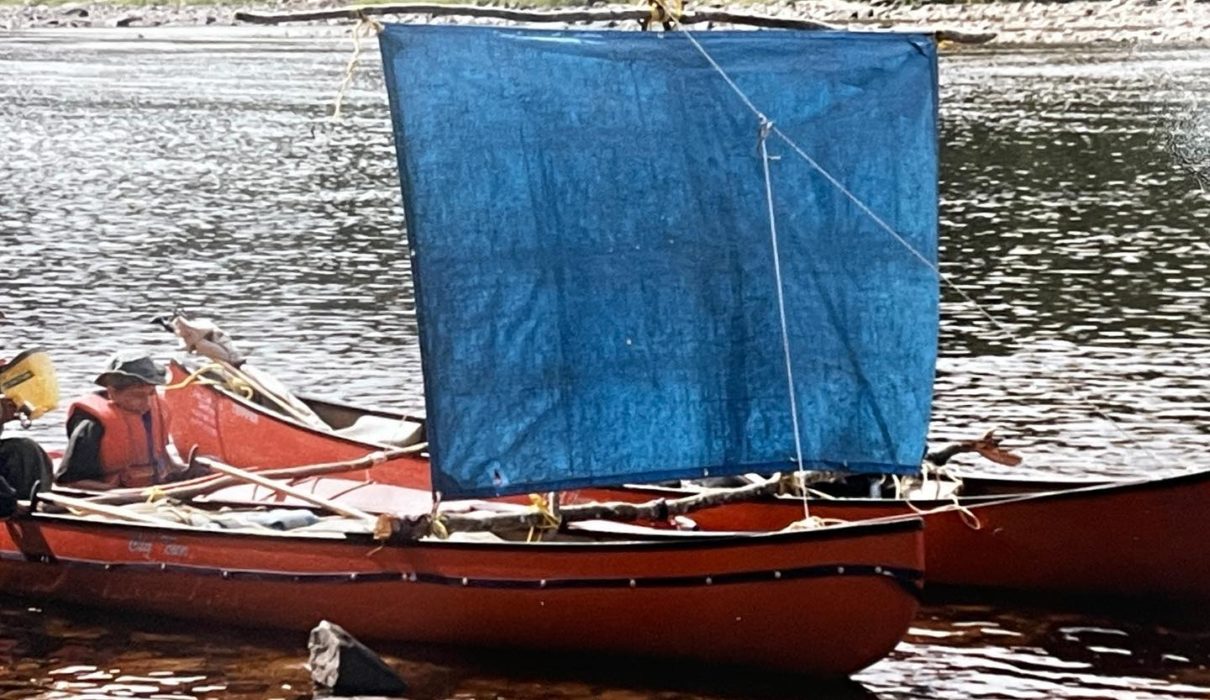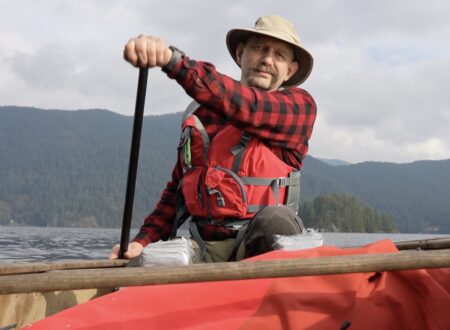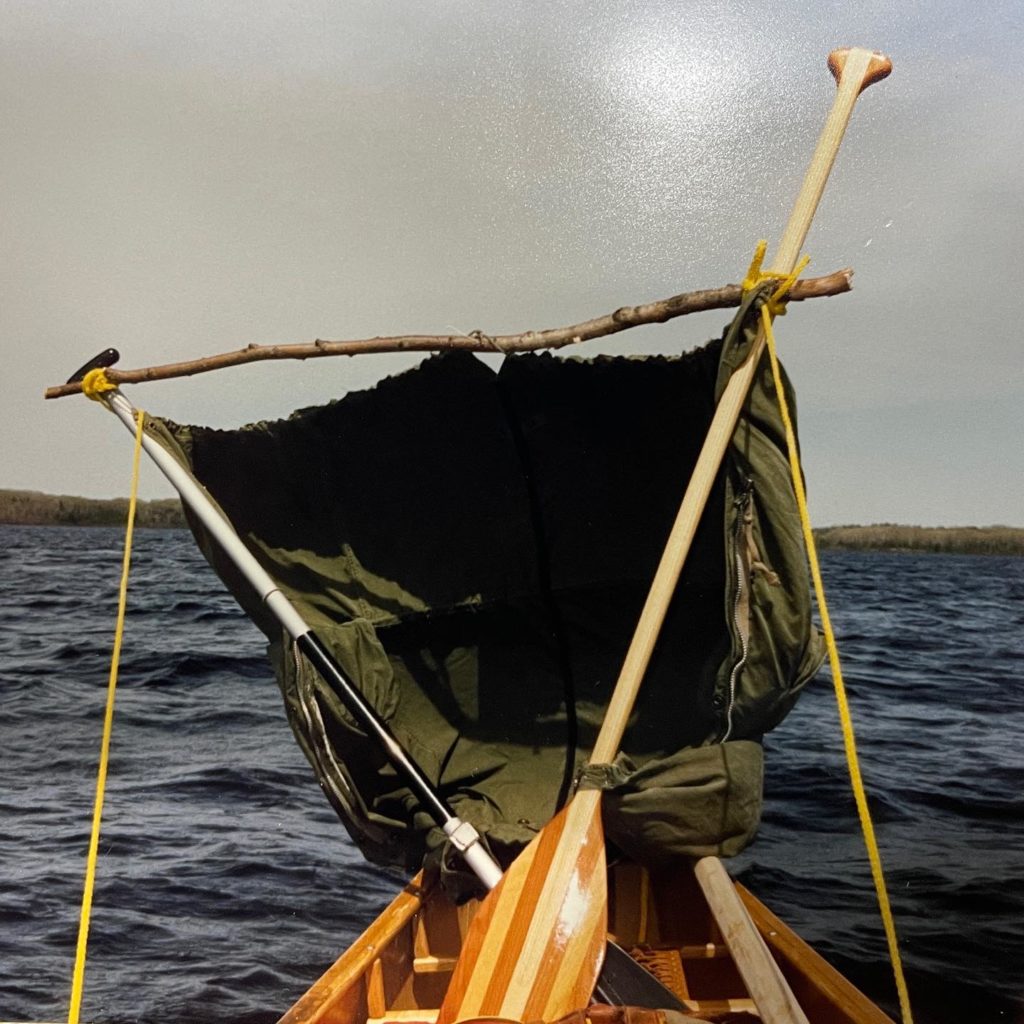
The first sail I ever built was an army jacket held up by two paddles and a stick. The two paddles were jammed in place between the bags and the bow seat, then held in place by a rope that looped from the center thwart to the top corner of the sail and then down to the bow.
This rig was shaky, and unstable, but it got me down the lake a little faster.
Over the years I’ve built many other canoe sails…

The sail above was improvised using sticks found in the forests of Temagami and a basic blue tarpaulin bought at Canadian Tire. Some parachute cord held the whole thing together.
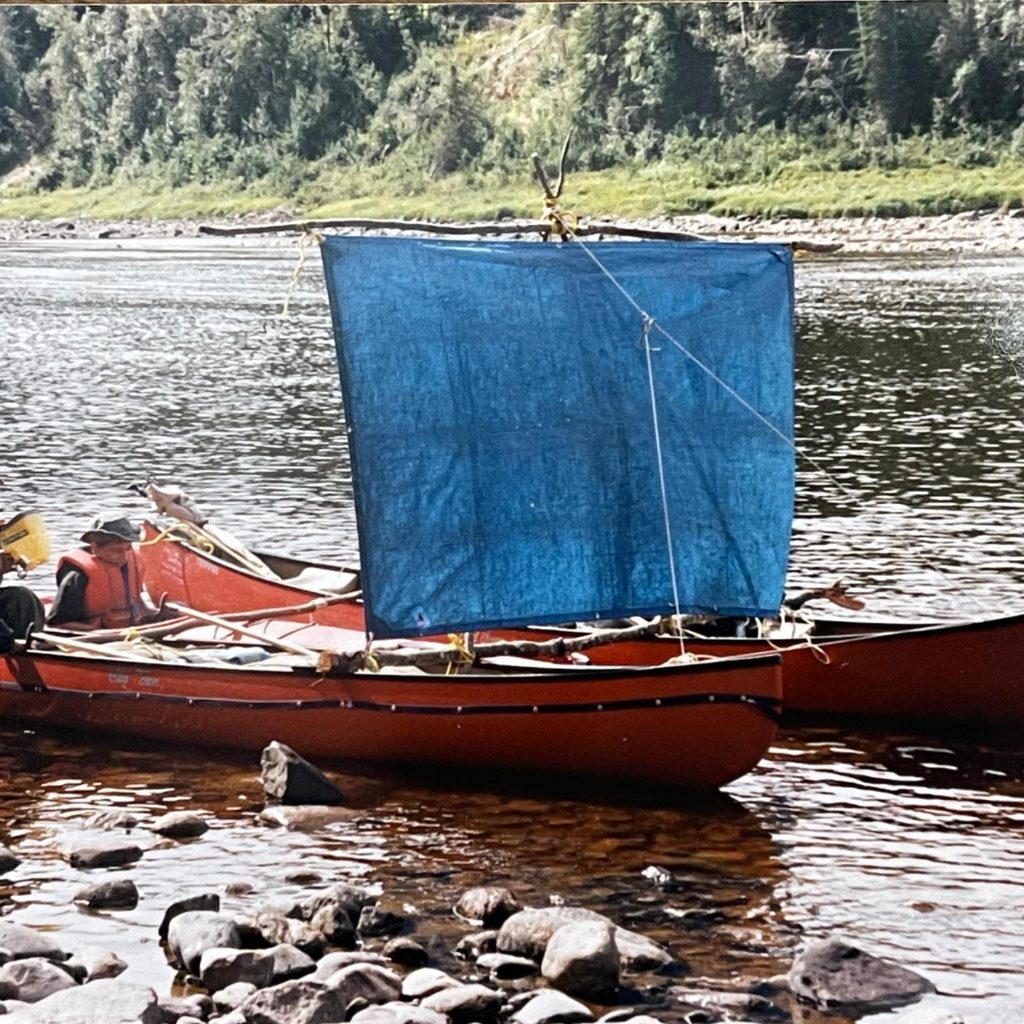
This fancy square rigger sail on a catamaran canoe raft was built on the Missinaibi River. It took probably two hours to build this triangular mast system with a full sail hanging from the yard.
Unfortunately the whole thing had to be disassembled later in the day because the river was very low and it was too unwieldy to drag the raft through the shallows.
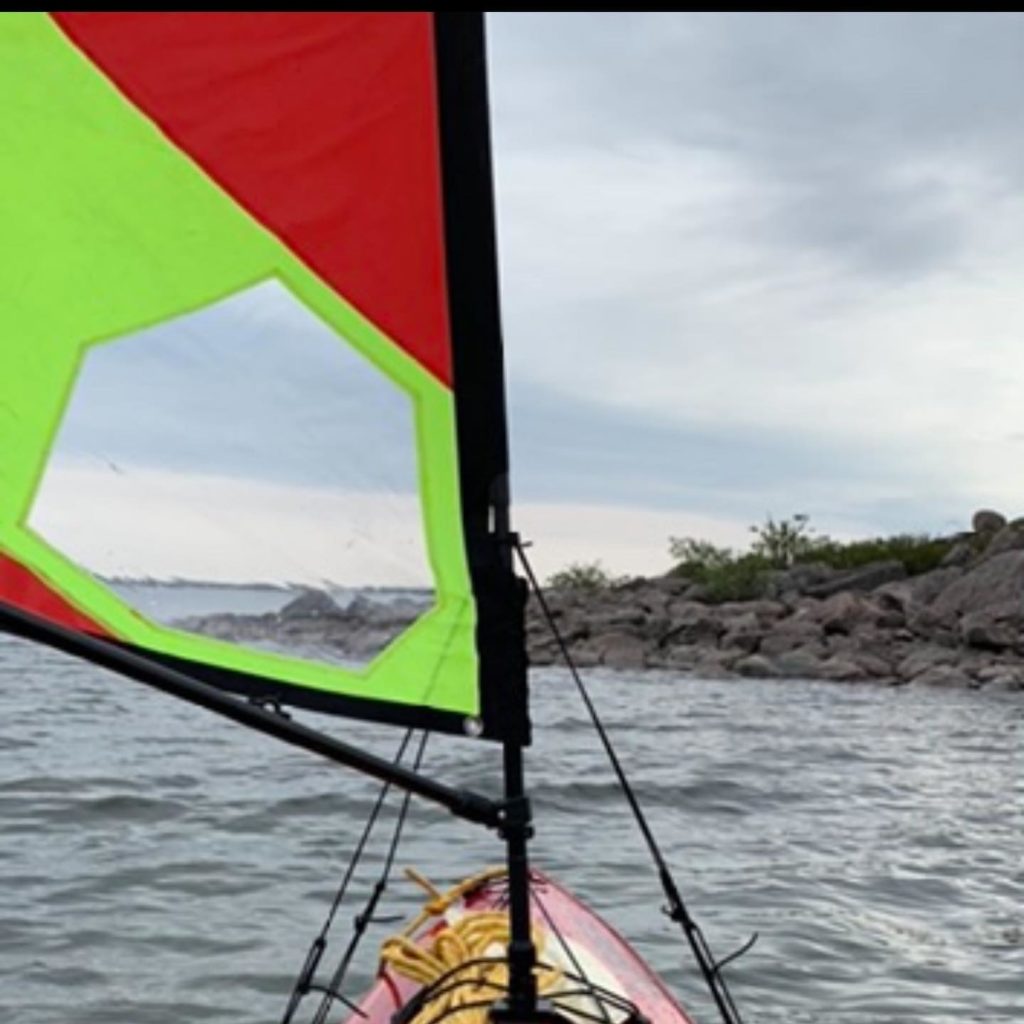
Most recently I’ve used a 1.4 square meter Falcon sail which is an amazing piece of technology. It allows you to sail crossways and even into the wind, which just isn’t possible for the other setups.
I used the 1.4 meter Falcon Sail mounted on a Clipper Sea-One canoe during my recent 1000 mile solo trip and it was fantastic. It was very light and allowed me to sail downwind, crosswind, and even – if conditions were perfect – slightly upwind.
A Word of Caution About Canoe Sailing
I wish it wasn’t so, but sailing canoes and kayaks which lack large keels is dangerous!
Sailing on lakes, and especially big lakes like Nueltin, requires caution and constant vigilance because you can get into trouble really quickly.
Years ago I was ascending the Kenogami River in Northern Ontario. I was just north of the small town of Longlac and had been travelling upriver for hundreds of kilometers. I came to a section of the river where it was very broad, almost like a lake, with no discernable current to fight.
I decided to take advantage of the strong north wind at my back, so I quickly rigged a small sail with a large army jacket and a couple of paddles, then set out into the open water.
At first life was good. The canoe sliced through the water and the waves were quite small. I leaned back in the canoe and steered the rig southwards.
The lake-like stretch of river was about 5 kilometers long, and about halfway I started to get really worried. The wind blowing across open water kept getting stronger, and the waves kept getting larger as I went further down the open area (a classic large fetch over shallow water and against a slight current situation). I had to constantly lean heavily on my paddle to stop the boat from broaching in the cold rollers.

This was no longer fun but there was no safe way to drop the sail. I was on my own and the boat needed continuous steering. If I climbed forward to lower the sail then the boat would have flipped instantly.
My only option was to continue downwind as the waves grew larger and larger, occasionally scooping water out of the boat with a swift pass of the bailer.
I white-knuckled the remaining 2 1/2 kilometers until I got to the much more protected inlet of the lake, rammed the boat up onto shore, and cut the lines holding the sail up. It had been a close call.
So no matter what kind of sail you use make sure you can drop it quickly without having to climb around, either by untying a slipknot, pulling a line out of a cleat, or quickly slicing a support rope with your knife.
Other good rules of thumb include,
- Only sail a canoe with an onshore wind
- Never sail when you’re far from shore
- Do it with 100% of your attention focused on the wind, waves and weather.
It really sucks to be bobbing around in the water, trying to right a heavily laden boat after getting tipped over by a strong gust of wind that hit your sail at the wrong angle.
A canoe sail is an incredibly useful tool, just like your knife, your axe, your stove or your bear spray. But just like all those tools it can very quickly get into trouble if you use it the wrong way.
Enjoy your sailing, but be careful


